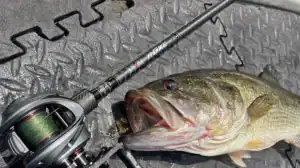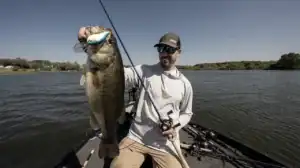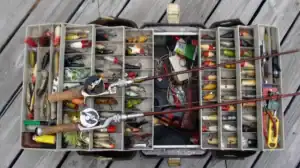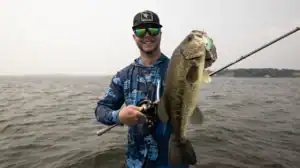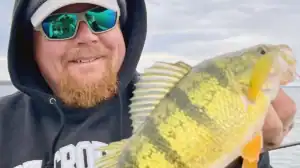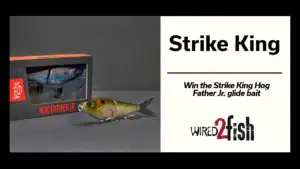Springtime is, arguably, the best time to be out on the water. Not just because of the beautiful weather, but for the multitude of species you can target to wash away the blues of a long winter. It’s the season all open-water anglers love.
For bass anglers in many parts of the country, the season might not be open for much of the spring. For some, it might still be a little too cold for bass to be reactive to certain techniques whether the season’s open or not. So what does a bass angler do to wet a line this early in the season? Instead of preparing more tackle — again, go after panfish.
Spring is when panfish reign supreme, and fishing for bluegills, crappies, and perch can improve your bass game way more than you might think. Here’s how, and a few more reasons bass anglers should definitely try to target panfish during the spring.
Understanding the Prey Species

I think it’s safe to say that, universally, big fish eat little fish. Much of a bass’s diet consists of bluegills, crappies, and perch across the country. So, understanding where they live and how they react could help you better understand both largemouth and smallmouth bass.
Trust me, before I moved to Western New York, I was never much of a pan fisherman. But after learning how diverse our Finger Lakes fisheries are and how loaded they are with many panfish species, it was imperative that I figure it out. Little did I know, it would lead me down a rabbit hole I enjoy immensely and will capitalize on in the coming years.
Of the many species of panfish we chase here in the Finger Lakes, yellow perch are No. 1 on the list, especially in Cayuga Lake, where largemouth reign as one of the top predatory species. I’ve learned so much about the largemouth fishery in the lake while fishing for perch in the spring. All year, the bass follow the large schools of perch to find an easy meal, which isn’t hard since there are millions of perch in the lake. Find the structure, find the perch, and usually, the big largemouth aren’t far behind.
I noticed it more often when I’d catch an incidental 4-plus-pound largemouth while either reeling in a perch or when juvenile perch were following my smaller baits. Since then, I’ve gone back to many of these structure spots that seemed to be in the middle of nowhere and caught bass after bass for hours on end. If you understand how the prey relate to the structure, you’ll begin to understand the predators.
Being Tuned into the Bite

“Pan fishing in the spring before bass season is just like the reason I go squirrel hunting before deer season. It allows me to stay tuned into my surroundings so I’m always attentive,” says Roy Bilby, regional New York Bass Pro Shops pro staff member and host of The Angler Within podcast. Bilby was also the advisor of my college’s bass fishing team, and he’s been like a second dad to me ever since. Of all the people I fish with, Roy is the most passionate pan fisherman I know. But that passion has led to much success on the water in bass tournaments and fun fishing.
“Chasing panfish early in the year allows me to be in tune with the bite. These fish bite extremely lightly, especially perch and crappie, this time of year, and being able to feel that bite will help a lot later in the year on those tough days on the water,” Bilby says.
When you’re cooped up inside all winter and then swing for the fences on your first trip out, you’ll probably be a little rusty. Pan fishing allows you to stay in tune with what’s going on in the water and ecosystem, like water temperature, seasonal and spawning patterns, and weather changes that can affect biting fish.
“A fish is a fish,” he says. “Every single species has something to teach that can help benefit the others.”
Utilizing Bass Tactics You Already Know
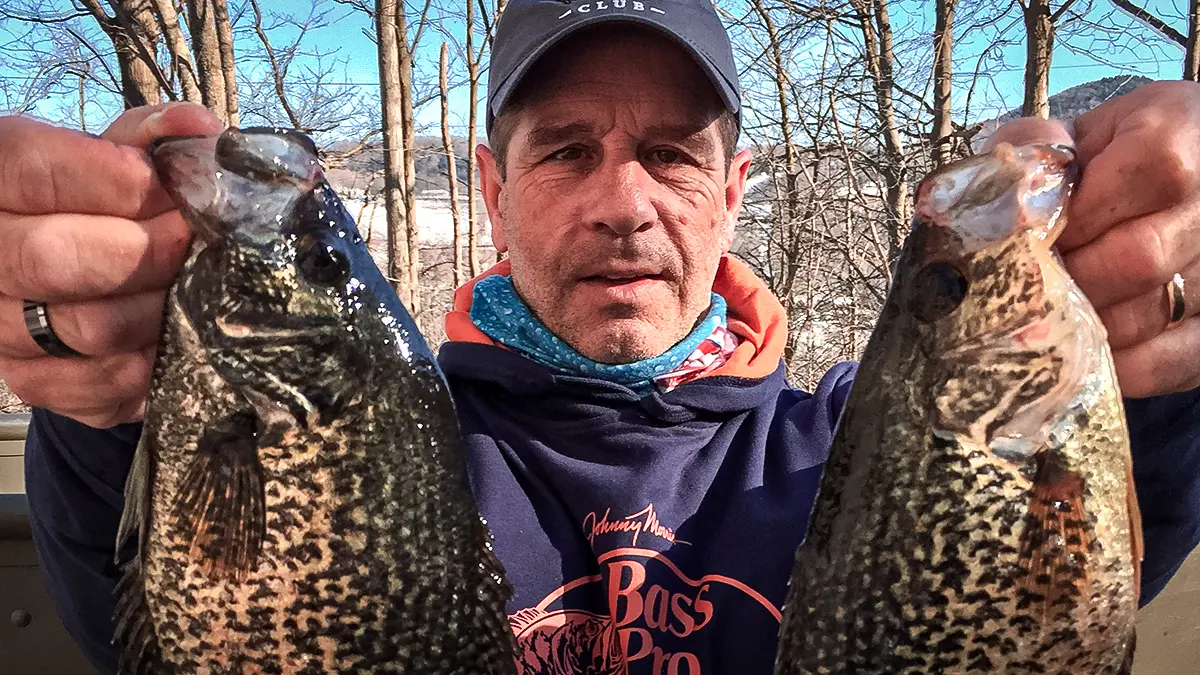
For much of the pan fishing we do around this area, the tactics are the same we use for bass, just on a much smaller scale. Many of these dinner plate species are very opportunistic feeders and will jump on anything that moves for an easy meal. This makes gaining confidence in certain techniques more attainable — and a ton of fun.
One of those techniques is utilizing small swimbaits, which is something near and dear to my heart as well as Bilby’s. It’s extremely similar to catching bass using small swimbaits. All panfish species here in the North Country generally stay as close to the bottom as possible early in the spring, making a small swimbait an excellent choice. Bilby loves throwing a Bass Pro Shops Squirmin’ Shad on a light jighead.
He loves it so much that he’s got it tied on all year long for all species of fish. But for panfish, especially big yellow perch, it’s hard to beat. It has an extremely tight tail wobble, which drives all species crazy!
I’m a huge fan of the 6th Sense Party Minnow on a roundball jighead. The durability of the plastic is second to none, and it still has an incredibly soft tail that swims with the slightest movement. Just like with bass fishing, make a long cast and slowly retrieve it back to the boat. It works like a charm!
Paint With a Wide Brush
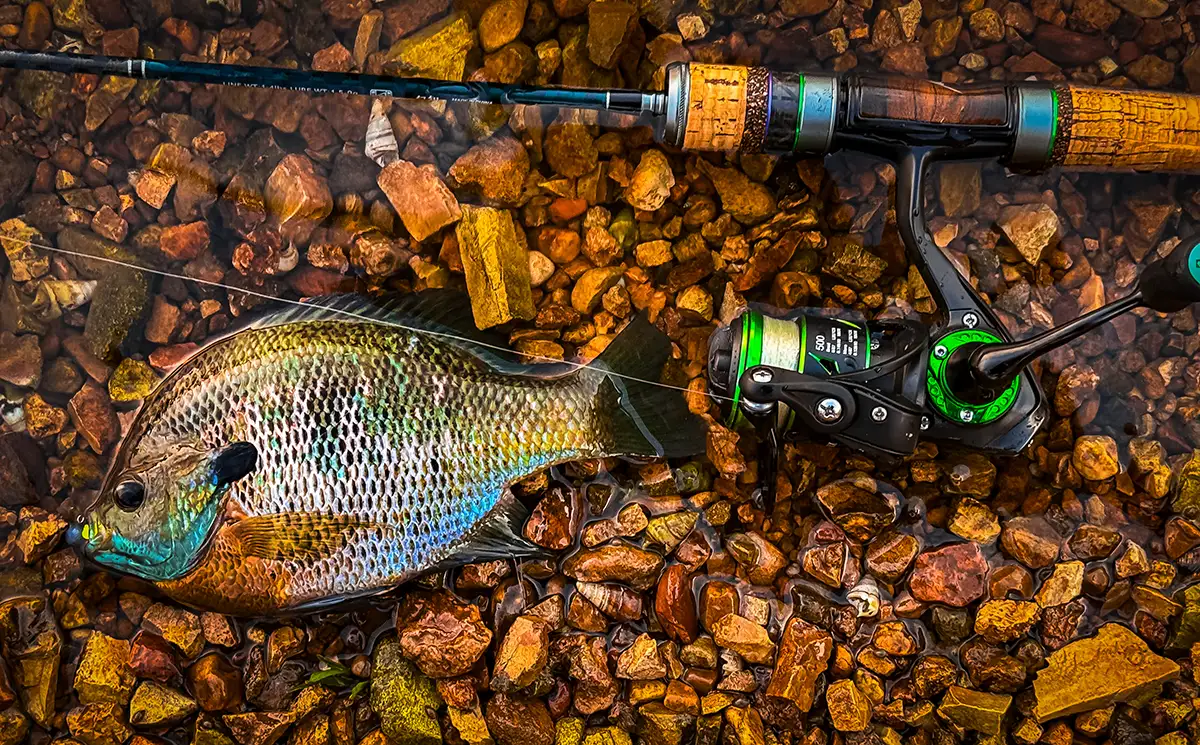
While talking with Bilby, he said something to me that will forever stick in my mind: “In fishing, you have to paint with a wide brush.”
It means you have to become a diverse angler to truly understand any species of fish. There are many anglers out there who are so focused on one species that they sometimes forget the bigger picture. Dabbling in a little bit of everything will help you understand how the entire food chain functions and what to present at certain times of the year. Plus, panfish will always be excellent table fare.




